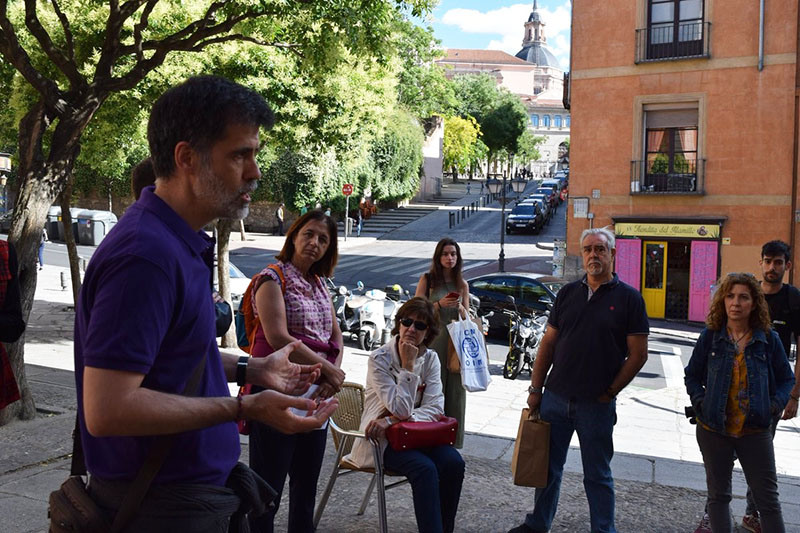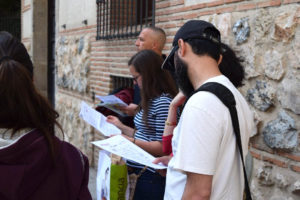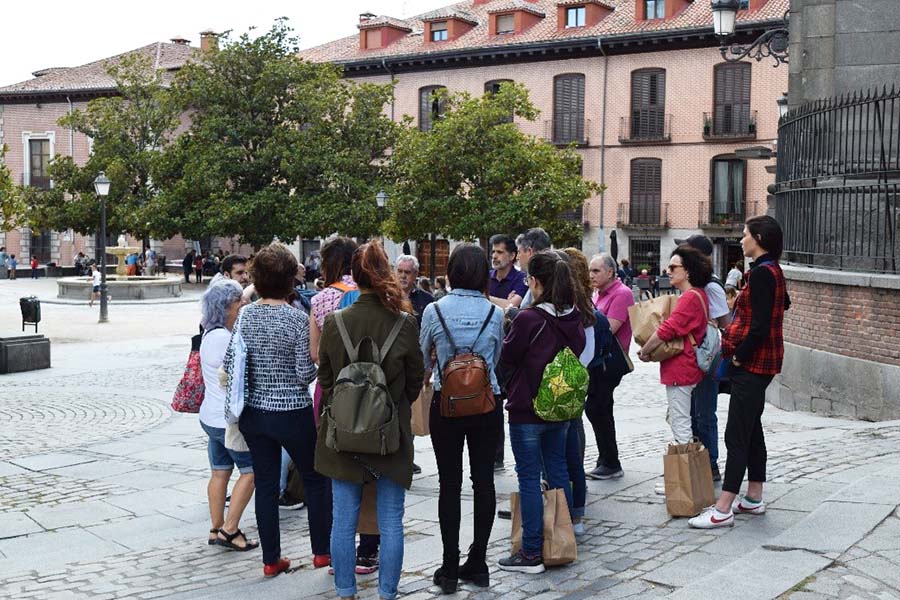Actions, Communications
Visit to Mayrit, with the International Organization for Migration
Last June 10th, in the afternoon, we did one of our guided visits around Madrid with a distinctive touch. It was a perfect combination of the three routes we have launched at the Centre for the Study of Islamic Madrid (CEMI), which includes the usual Visit to the Islamic Madrid, a Visit to the Habsburg Madrid, and the new initiative launched by FUNCI, The other Habsburg Madrid: renegades, captives and slaves.

This activity was framed in the project “COMMIT: to promote the integration of the people resettled in Croatia, Italy, Portugal, and Spain”, financed by DG HOME of the European Commission, and managed by the International Organization for Migration’s Coordination Office for the Mediterranean. With this purpose, it counted with an interpreter that translated into Arabic the explanations provided by our guides to the Syrian participants that didn’t speak Spanish.
A visit to the city’s origins
As usual, the visit began at the Museum of San Isidro, located in the Plaza de San Andrés, in the district of La Latina. Inside the Museum, our guide for the Islamic Madrid, Irene Suárez, historian and activities coordinator of CEMI, took us to the city’s Islamic origins. After discovering the capital’s Andalusi remains, we moved to the Habsburg Madrid, guided by Daniel Gil-Benumeya, philologist and scientific coordinator of CEMI, and Javier Arranz, historian specialized in the history of Madrid. Both offered a perfect combination that mixed a scholar and an informative approach, by explaining the most interesting anecdotes that make of the city and its inhabitants something unique.
The Park Emir I, located at the Cuesta de la Vega, next to the Cathedral of La Almudena, offers an Andalusi ethnobotanical tour that complements perfectly the Muslim wall of Madrid.
 Later on, the participants enjoyed a small meal at the wonderful environment of the Park Emir Mohamed I, the epicenter of FUNCI’s project –in collaboration agreement with the City Council of Madrid– that aims at adapting the Park as an Andalusi orchard. The Park Emir I, located at the Cuesta de la Vega, next to the Cathedral of La Almudena, offers an Andalusi ethnobotanical tour that complements perfectly the Muslim wall of Madrid, the most ancient monument of Madrid, from the 9th century.
Later on, the participants enjoyed a small meal at the wonderful environment of the Park Emir Mohamed I, the epicenter of FUNCI’s project –in collaboration agreement with the City Council of Madrid– that aims at adapting the Park as an Andalusi orchard. The Park Emir I, located at the Cuesta de la Vega, next to the Cathedral of La Almudena, offers an Andalusi ethnobotanical tour that complements perfectly the Muslim wall of Madrid, the most ancient monument of Madrid, from the 9th century.
This groundbreaking activity stresses the importance of collaboration and awareness-raising on the Syrian refugees through the Islamic origins and history of the city of Madrid.
To sum up, this groundbreaking activity stresses the importance of collaboration and awareness-raising on the Syrian refugees through the Islamic origins and history of the city of Madrid. The visit, in two languages and with Spanish and Syrian participants, allowed for an exchange and common cultural contribution. At the Centre for the Study of Islamic Madrid, we hope to continue promoting these type of activities so that both Madrid’s population and its visitors can learn about the most unknown history of the capital.


